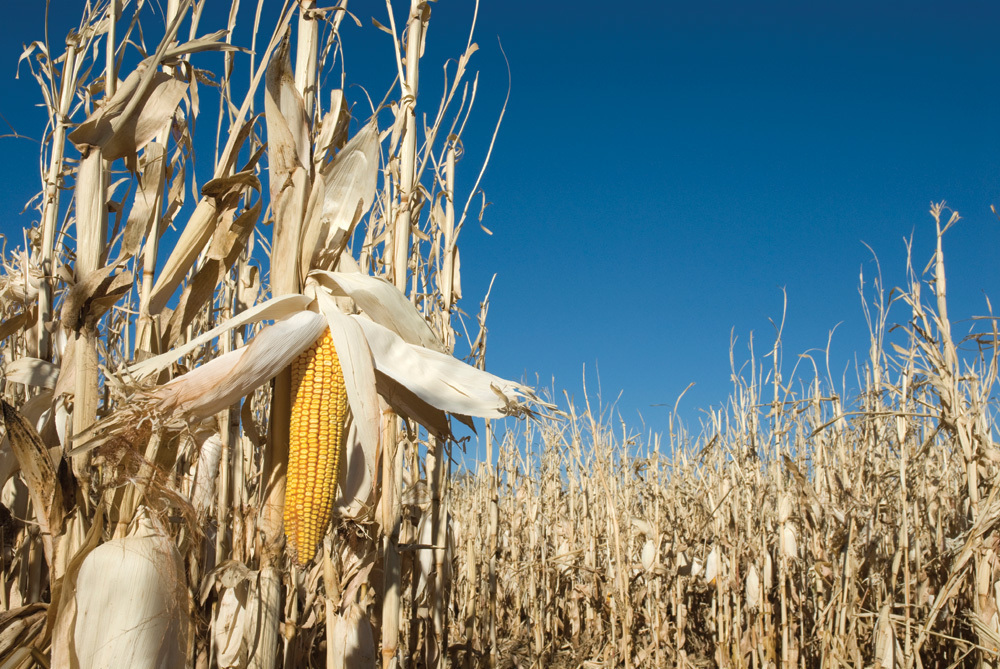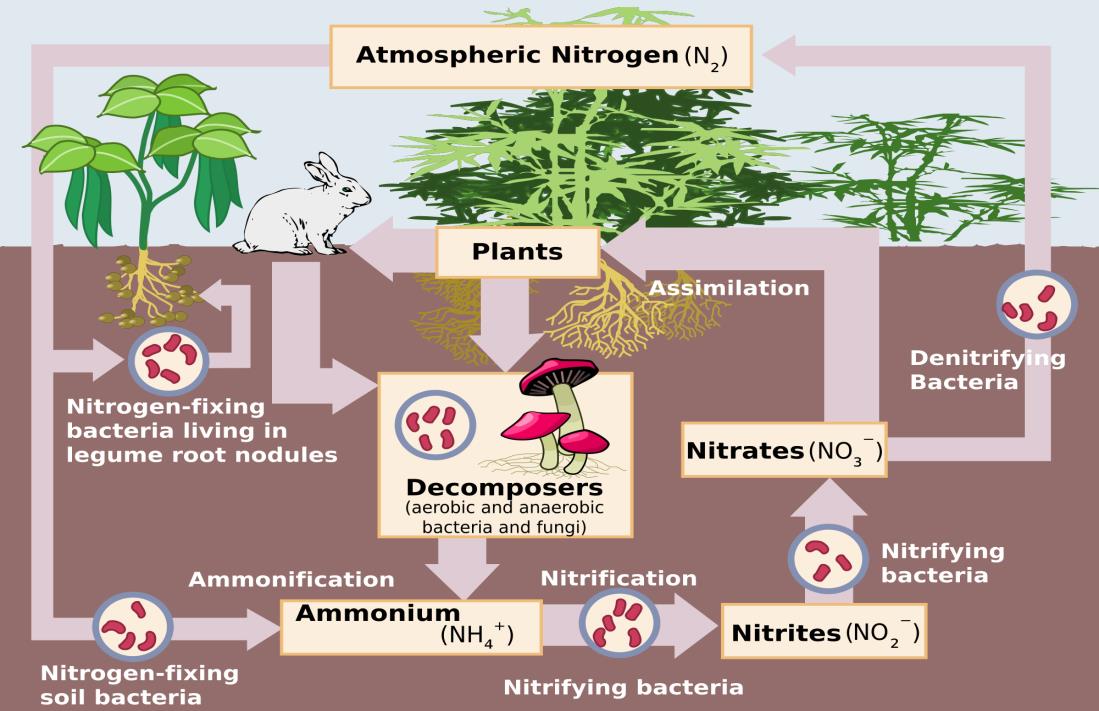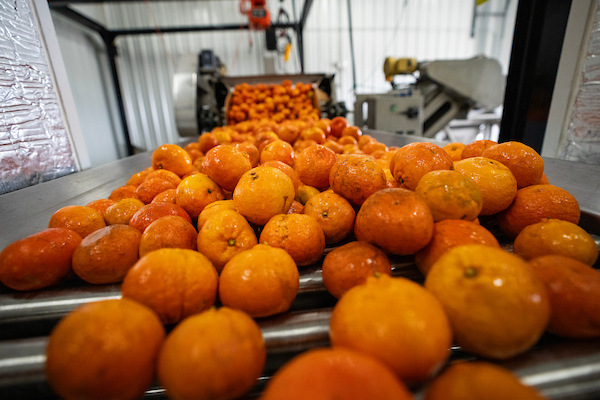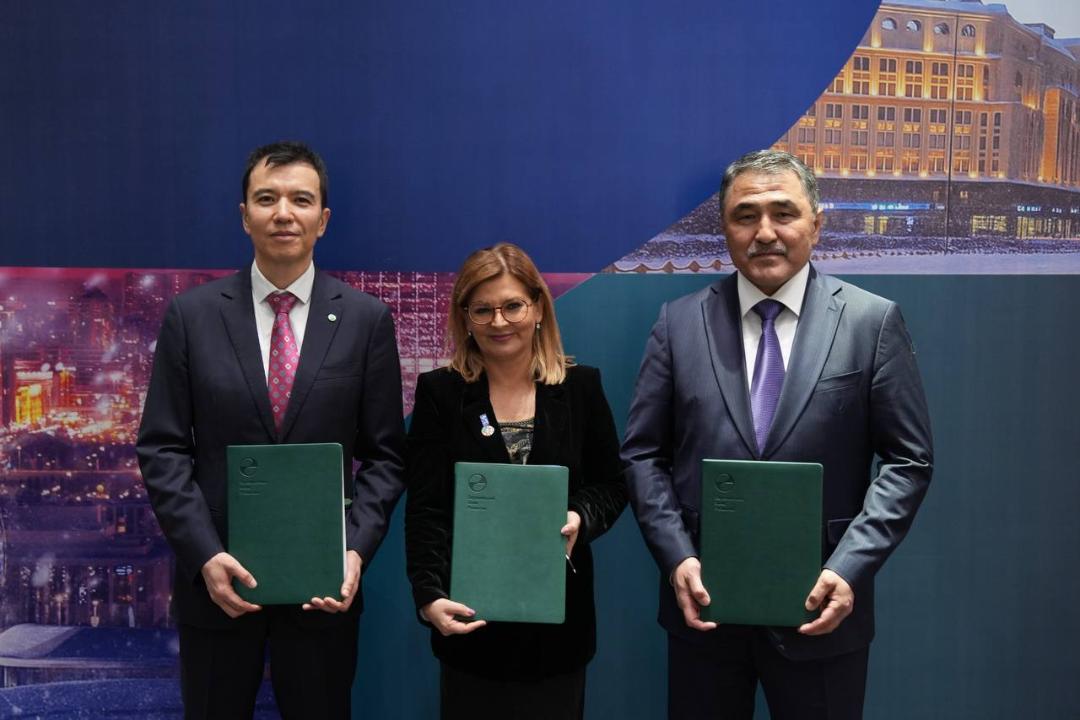The future of farming: How AI could transform agriculture – Broadband Communities

Report on the Integration of AGI and LEO Satellite Technology for Sustainable Agriculture
Executive Summary
This report outlines the transformative potential of integrating Artificial General Intelligence (AGI) with Low Earth Orbit (LEO) satellite technology to revolutionize global agricultural practices. This technological synergy is poised to create an era of precision agriculture at an unprecedented scale, directly contributing to the achievement of several United Nations Sustainable Development Goals (SDGs). By deploying specialized, energy-efficient AI agents on LEO satellites that communicate with terrestrial management systems, this approach promises to enhance food security, promote sustainable resource use, and democratize access to advanced farming technologies. The report details the technological components, operational capabilities, and profound impacts on sustainability, with a specific focus on SDG 2 (Zero Hunger), SDG 9 (Industry, Innovation, and Infrastructure), SDG 12 (Responsible Consumption and Production), and SDG 13 (Climate Action).
Technological Framework: Specialized AI and LEO Satellite Constellations
The Shift to Specialized, Low-Power AI Models
The evolution of artificial intelligence is moving from large, resource-intensive general models toward highly specialized agents. This development is critical for space-based applications, where power and computational resources are constrained. This innovation directly supports SDG 9 by fostering resilient infrastructure and sustainable industrialization.
- Domain-Specific Knowledge: AI models optimized for agriculture can understand complex interdependencies between soil, weather, biology, and pests more effectively than general models.
- Computational Efficiency: Advances in model efficiency, such as quantization and neuromorphic computing, drastically reduce power consumption. This enables continuous operation on LEO satellites, which have limited energy capacity.
- Hardware Optimization: Specialized AI can run on low-power edge devices and custom processors (ASICs, TPUs), consuming significantly less energy than traditional GPU-based systems.
Capabilities of AGI-Powered LEO Satellite Agents
Deploying AI agents on LEO satellites provides a unique orbital vantage point for agricultural monitoring and management. These agents can process vast datasets in real-time, offering insights that are crucial for addressing food security and climate change, aligning with SDG 2 and SDG 13.
- Advanced Data Analysis: Satellite agents can analyze multispectral imagery, thermal readings, and soil moisture to detect crop stress, pest infestations, and nutrient deficiencies with high accuracy.
- Predictive Modeling: AGI-level reasoning allows for accurate yield forecasting and optimization of planting schedules based on complex global climate models.
- Coordinated Global Coverage: AI agents operating in a satellite constellation can create a comprehensive, real-time map of global agricultural conditions, enabling a level of intelligence unattainable by single systems.
- Autonomous Operations: These agents can manage satellite functions, diagnose hardware issues, and prioritize data transmission, enhancing operational resilience and efficiency.
Integrated Systems for Precision Agriculture
Synergy Between Satellite AI and Terrestrial Devices
The system’s full potential is realized through the integration of satellite-based AI with a network of ground-based devices. This creates a closed-loop management system where high-level strategic insights from space guide precise, localized actions on the ground. This integrated infrastructure is a cornerstone for achieving the responsible production patterns outlined in SDG 12.
- Smart Sensor Networks: Low-cost, solar-powered sensors collect field-level data (soil pH, moisture, nutrients), which is processed by the more powerful satellite AI.
- Autonomous Execution Units: Drones and robotic systems, guided by satellite AI, perform tasks like precision irrigation, targeted pesticide application, and selective harvesting.
- Accessible Farmer Interfaces: Actionable insights are delivered to farmers via intuitive interfaces on handheld devices or augmented reality glasses, translating complex data into clear recommendations.
Driving Progress on the Sustainable Development Goals (SDGs)
SDG 2: Zero Hunger
This technology directly addresses the challenge of global food security by increasing productivity and making advanced tools accessible to all farmers.
- Increased Yields: Precision agriculture can boost crop yields and quality, contributing to a projected 10-20% increase in global food production.
- Democratizing Technology: By centralizing heavy computation in space, the system lowers the cost barrier for small-scale farmers in developing regions, providing them with access to tools previously available only to large enterprises. This enhances productivity and economic opportunities where food insecurity is most acute.
SDG 12: Responsible Consumption and Production & SDG 6: Clean Water
The system enables a significant reduction in agricultural inputs, fostering sustainable production patterns and conserving vital natural resources.
- Resource Optimization: Precision application of resources is projected to reduce water, fertilizer, and pesticide use by 30-50%.
- Waste Reduction: Enhanced monitoring and yield prediction can minimize post-harvest losses and optimize the food supply chain.
- Environmental Impact: Reducing chemical runoff and conserving water helps protect ecosystems and aligns agriculture with sustainable practices.
SDG 13: Climate Action & SDG 15: Life on Land
The real-time monitoring and proactive management capabilities of the integrated system build resilience against climate-related challenges.
- Climate Adaptation: Farmers can better adapt to extreme weather events and changing climate patterns with predictive insights and automated response systems.
- Sustainable Land Management: The technology can be extended beyond agriculture to forestry, water resource management, and environmental monitoring, enabling holistic stewardship of natural resources.
Feasibility, Challenges, and the Path Forward
Projected Timeline and Economic Viability
The deployment of a fully integrated system is considered feasible within the next 10-15 years, contingent on continued technological progress. Economic viability is improving due to:
- Decreasing Launch Costs: The cost of deploying LEO satellites continues to fall, making private and cooperative-led initiatives financially practical.
- Mass Production of Devices: The unit cost of terrestrial sensors and robotics is expected to decrease, ensuring affordability for farmers at all economic levels.
Key Implementation Challenges
Realizing this vision requires addressing several significant hurdles:
- Connectivity: Ensuring reliable communication in remote areas necessitates robust edge AI capabilities on terrestrial devices.
- Regulatory Frameworks: International coordination is needed for spectrum allocation, data privacy, and satellite operations.
- System Durability: Both satellite and ground components must be designed for long-term, reliable operation with minimal maintenance.
Conclusion: A New Paradigm for Global Stewardship
The integration of AGI and LEO satellite technology offers a clear and powerful pathway toward a future of sustainable, efficient, and equitable agriculture. This paradigm shift directly supports the core objectives of the UN Sustainable Development Goals by enhancing food security, promoting responsible resource management, and building resilience to climate change. The continued investment in and development of these technologies are critical for feeding a growing global population while safeguarding the planet’s natural resources for future generations.
Analysis of Sustainable Development Goals (SDGs) in the Article
1. Which SDGs are addressed or connected to the issues highlighted in the article?
-
SDG 2: Zero Hunger
The article directly addresses this goal by focusing on technologies designed to “support a growing global population” and enhance “global food security.” It discusses methods to boost agricultural productivity, forecast yields, and make farming more efficient, all of which are central to ending hunger. The text explicitly mentions the “United Nations Sustainable Development Goals, particularly those related to… zero hunger.”
-
SDG 9: Industry, Innovation, and Infrastructure
This goal is a core theme of the article. The entire piece is about a major technological innovation—the integration of AGI with LEO satellites—and the development of new infrastructure. It describes “a new era in space technology and AI,” the “deployment of LEO satellite constellations,” and the creation of a “comprehensive farm management system” that relies on this advanced infrastructure to revolutionize an industry.
-
SDG 12: Responsible Consumption and Production
The article highlights how the new technology promotes sustainable practices. It states that precision agriculture will “help farmers cut water, fertilizer, and pesticide use by 30 to 50 percent” and enable “more efficient use of water, fertilizers, and pesticides.” This directly aligns with the goal of achieving sustainable management and efficient use of natural resources. The article explicitly references the SDG related to “responsible consumption and production.”
-
SDG 13: Climate Action
The technology’s role in climate change adaptation is a key benefit discussed. The article explains that the “resilience benefits of this integrated system will help farmers adapt to the increasing challenges posed by climate change, extreme weather events, and volatile market conditions.” This directly supports the goal of strengthening resilience and adaptive capacity to climate-related hazards. The text also explicitly mentions the SDG related to “climate action.”
2. What specific targets under those SDGs can be identified based on the article’s content?
-
Target 2.3: By 2030, double the agricultural productivity and incomes of small-scale food producers.
The article addresses this by stating the technology will make “advanced farming technologies more accessible to small-scale farmers” and provide them with “the same advanced agricultural insights and management tools as large commercial farms,” which would “boost agricultural productivity and economic opportunities in areas where food security remains a significant concern.”
-
Target 2.4: By 2030, ensure sustainable food production systems and implement resilient agricultural practices that increase productivity and production.
This is supported by the article’s focus on creating “a crucial step toward sustainable farming” and providing “resilience benefits” that enable “proactive management of emerging threats” and adaptation to “the increasing frequency and severity of weather-related agricultural problems.”
-
Target 9.4: By 2030, upgrade infrastructure and retrofit industries to make them sustainable, with increased resource-use efficiency and greater adoption of clean and environmentally sound technologies.
The article describes how the technology will “significantly reduce agriculture’s environmental impact” and “transform agriculture from a resource-intensive industry into a more sustainable practice that works in harmony with natural systems” through major resource optimization.
-
Target 9.c: Significantly increase access to information and communications technology and strive to provide universal and affordable access to the Internet in least developed countries.
The article discusses how LEO satellite constellations and terrestrial devices will create a connected system, making “advanced farming technologies accessible to smallholder farmers in developing regions,” thereby democratizing access to data and insights.
-
Target 12.2: By 2030, achieve the sustainable management and efficient use of natural resources.
The article directly supports this target by claiming the technology will allow farmers to “cut water, fertilizer, and pesticide use by 30 to 50 percent,” representing a significant improvement in resource-use efficiency.
-
Target 13.1: Strengthen resilience and adaptive capacity to climate-related hazards and natural disasters in all countries.
The article emphasizes that “real-time insights from LEO satellites, combined with automated terrestrial response systems, will enable quick adaptation to changing conditions” and help farmers manage “the increasing challenges posed by climate change, extreme weather events, and volatile market conditions.”
3. Are there any indicators mentioned or implied in the article that can be used to measure progress towards the identified targets?
-
Indicator for Target 2.3 (Productivity of small-scale producers):
The article suggests measuring the increase in crop yields and overall food production. A specific potential indicator mentioned is an “increase worldwide food production by 10 to 20 percent.” Another is the adoption rate of these technologies among “smallholder farmers in developing regions.”
-
Indicator for Target 12.2 (Efficient use of natural resources):
A clear, quantifiable indicator is provided in the text: the percentage reduction in the use of key resources. The article states the technology will “help farmers cut water, fertilizer, and pesticide use by 30 to 50 percent.”
-
Indicator for Target 9.4 (Resource-use efficiency):
The article implies indicators related to energy and computational efficiency. For example, an AI agent could “analyze terabytes of satellite imagery daily while using less than 100 watts of power,” and there could be a “decrease in computational demand” for AI models.
-
Indicator for Target 13.1 (Resilience and adaptive capacity):
While not providing a hard number, the article implies that progress could be measured by the speed and effectiveness of responses to threats. An indicator would be the ability to achieve “quick adaptation to changing conditions” and “proactive management of emerging threats,” which could translate to reduced crop losses from climate-related events.
Summary Table of SDGs, Targets, and Indicators
| SDGs | Targets | Indicators |
|---|---|---|
| SDG 2: Zero Hunger |
2.3: Double agricultural productivity and incomes of small-scale food producers.
2.4: Ensure sustainable food production systems and resilient agricultural practices. |
– Increase in worldwide food production by 10-20%. – Adoption rate of advanced technology by smallholder farmers. – Implementation of proactive management systems for emerging threats. |
| SDG 9: Industry, Innovation, and Infrastructure |
9.4: Upgrade infrastructure to make industries sustainable and increase resource-use efficiency.
9.c: Increase access to information and communications technology. |
– Reduction in power consumption for data analysis (e.g., less than 100 watts for terabytes of data). – Percentage of small-scale farmers in developing regions with access to the technology. |
| SDG 12: Responsible Consumption and Production | 12.2: Achieve the sustainable management and efficient use of natural resources. | – Reduction in water, fertilizer, and pesticide use by 30-50%. |
| SDG 13: Climate Action | 13.1: Strengthen resilience and adaptive capacity to climate-related hazards. |
– Improved speed of adaptation to changing climate conditions. – Reduction in agricultural losses due to extreme weather events. |
Source: bbcmag.com

What is Your Reaction?
 Like
0
Like
0
 Dislike
0
Dislike
0
 Love
0
Love
0
 Funny
0
Funny
0
 Angry
0
Angry
0
 Sad
0
Sad
0
 Wow
0
Wow
0












































































